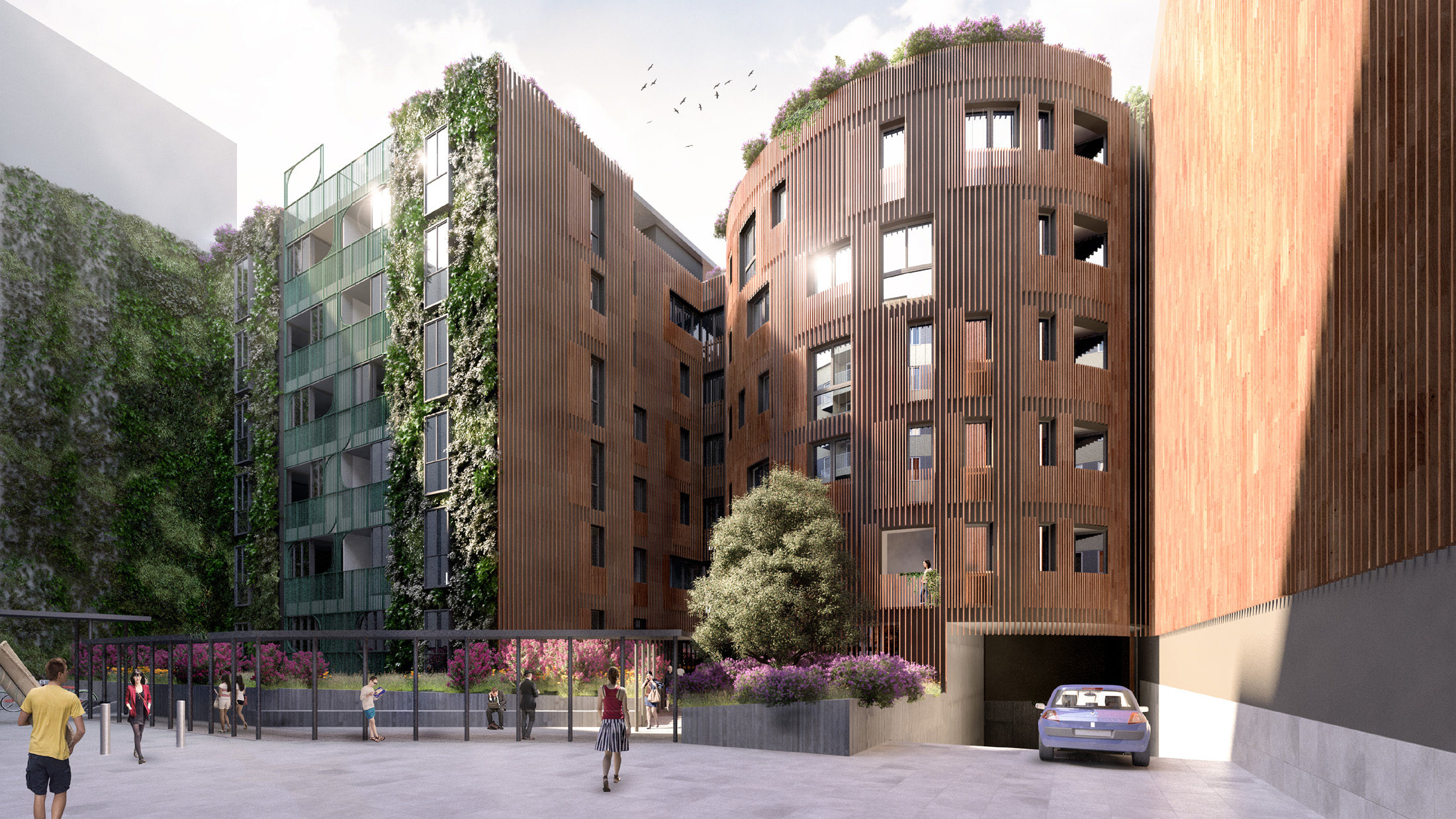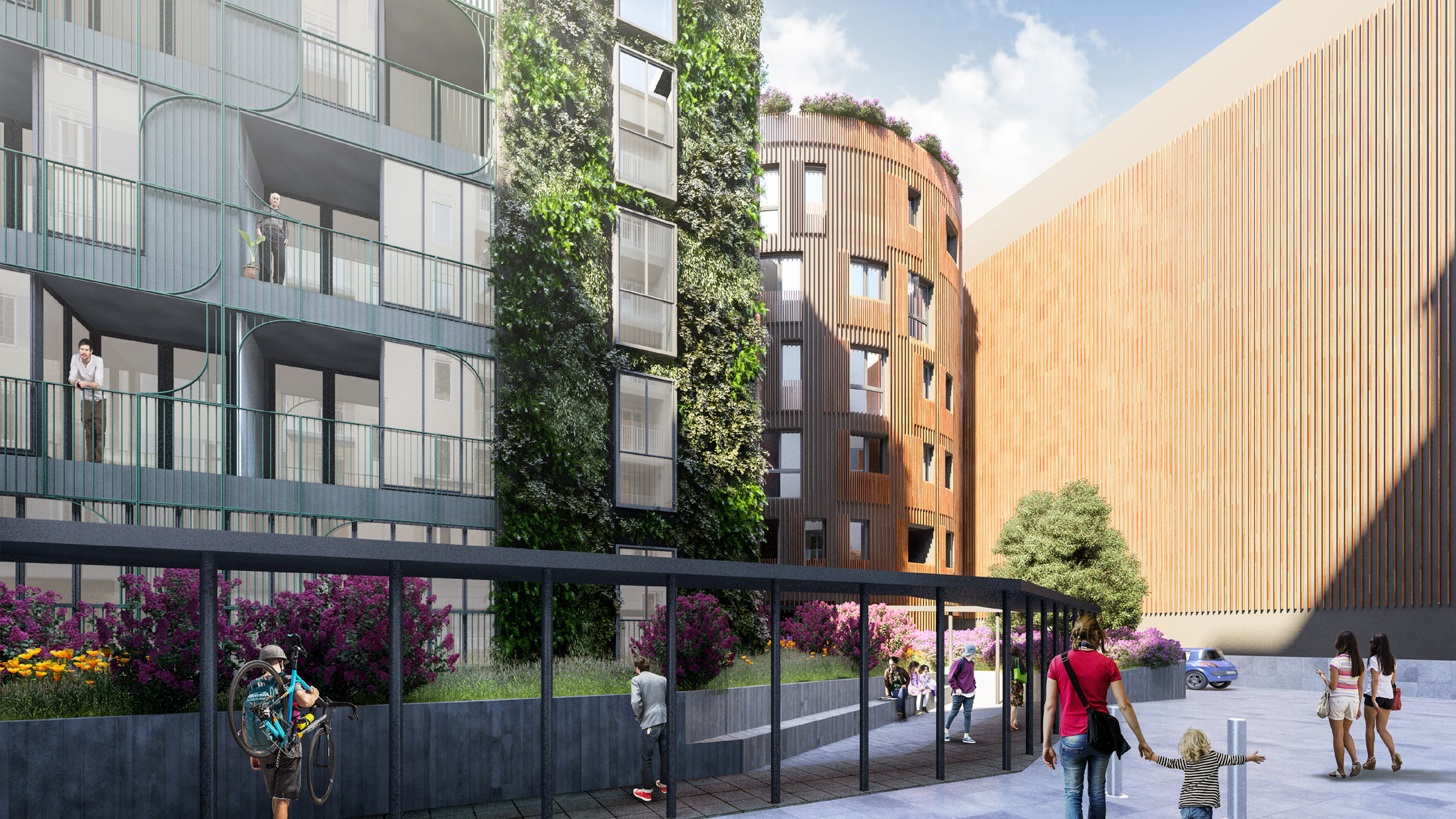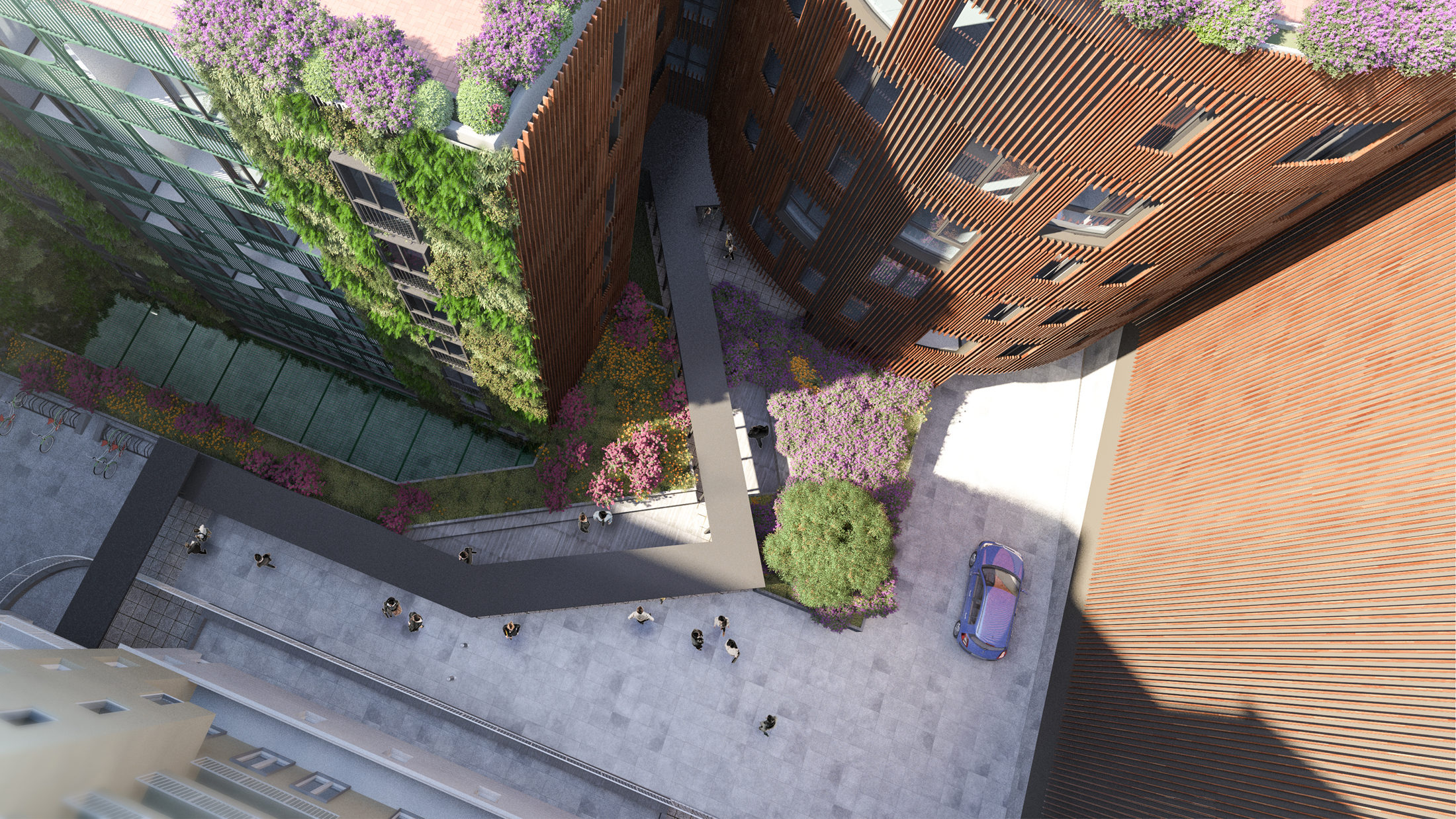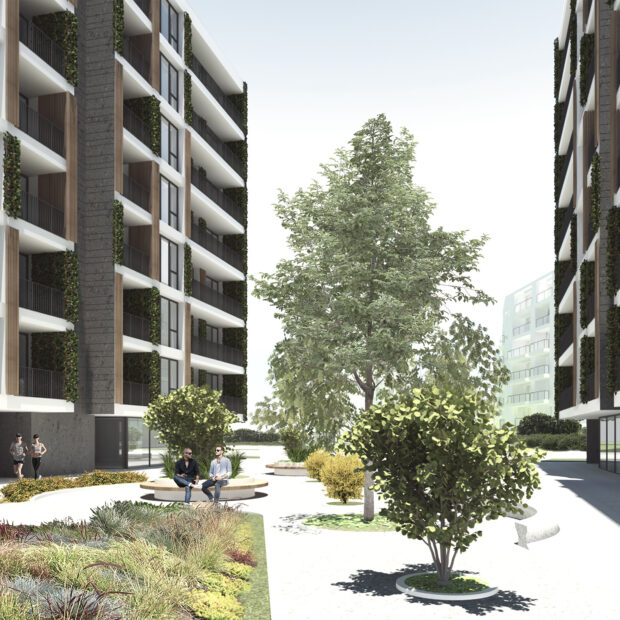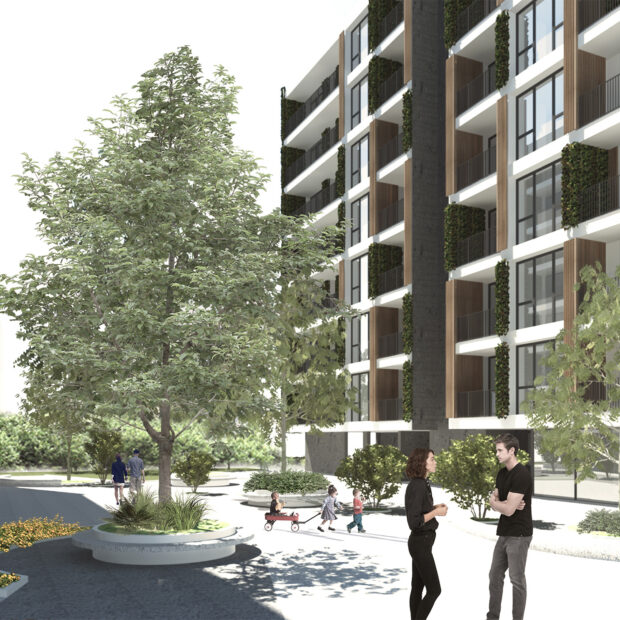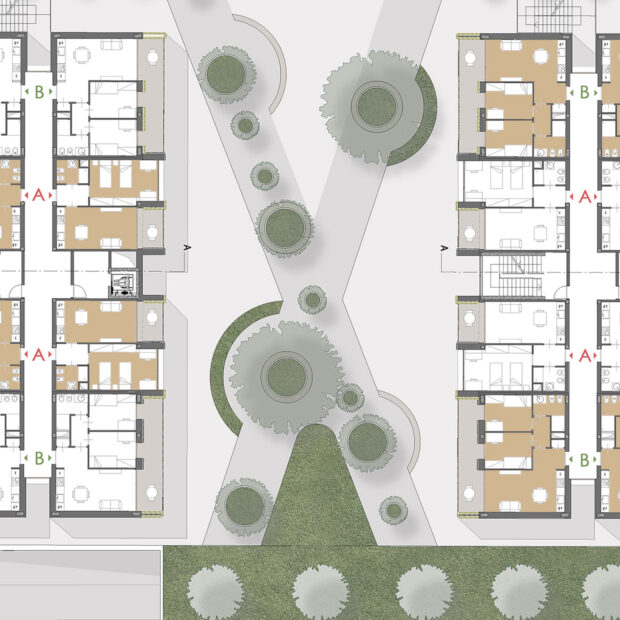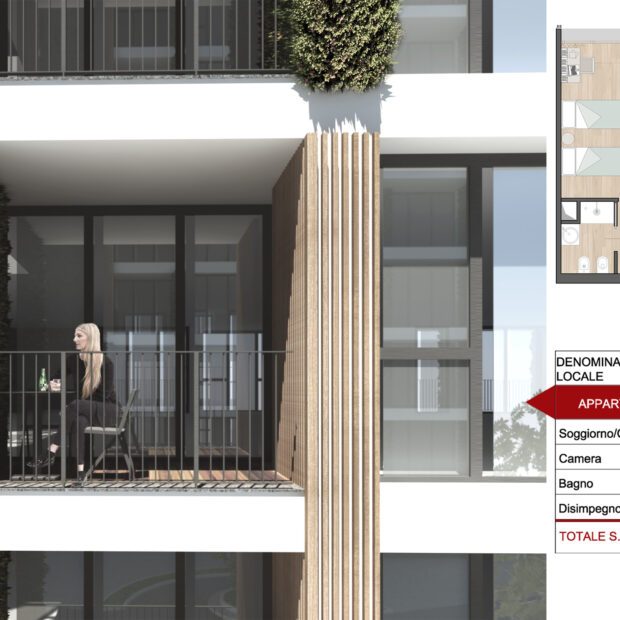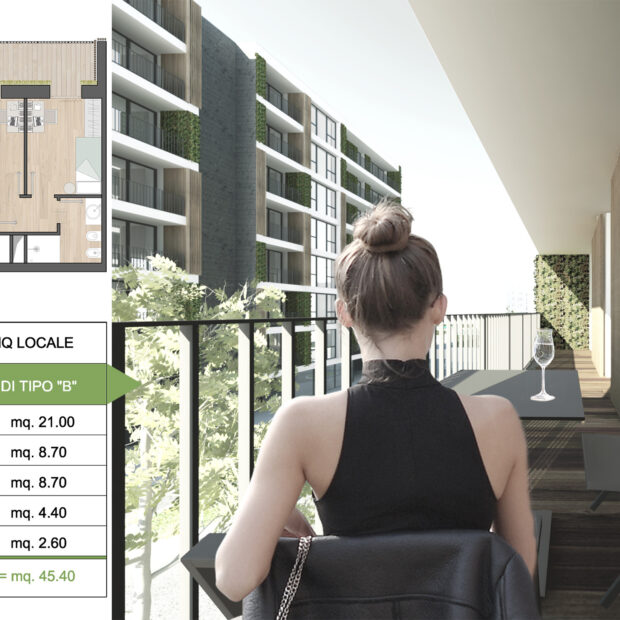The intervention configures an urban scenario that utilizes the design of the public space, functioning as an urban park, to initiate the revitalization processes through the articulation and continuity between the large dimensions and the small measures of paths and rest areas that insinuate and shape the proposed settlements. The park, with an area of about 6000 square meters, has an X shape that develops on a crossed system of axes, corresponding to two different tensions that characterize the green space, yet both axes are distinguished by a strong vocation for naturalness and spatiality. The North-South axis is the heart of the park, offering the most extensive spaces suitable for free enjoyment, rest, and leisure, with discreet seating for rest. Conversely, the East-West axis is more dedicated to walking and connecting; in fact, its presence is entrusted with the task of linking the urbanized area with the most important presence in the area, namely, Parco Lambro. The new building volumes, limited in height and land occupation, provide a backdrop to the new urban park, which employs traditional materials. The project, essentially, falls within the cultural trend that today finds in the design of public space and the use of natural and bio-sustainable materials the means to avoid being trapped in essentially outdated construction types. The housing units have been designed with particular attention to east-west solar exposure, and the large windows they are equipped with have the ability to enhance both light and panoramic views inside. As already highlighted, the garden, the park, the green lung within which the buildings are situated, plays a fundamental role not only from an aesthetic point of view.
Typological Characteristics of the Project
Starting from the plan volumetric layout, the study of building typologies and new settlement weights led to the distribution of volumes divided into 8 buildings (5 free housing buildings, 1 social housing building, 2 student residences) oriented with a north-south axis to make the most of sunlight throughout the day. The project was essentially conceived with the principle of "unity of land and common use of spaces" in mind. The design priorities were, essentially, to provide the Residence buildings with an area independent from the others so that the necessary spaces could be used by guests and especially by the Foundations without interference with the rest of the subdivision. Therefore, the portion of the lot that best fulfilled this task was found to be the southern area, separated from the rest of the lot by the design of a new road, which is nothing but the natural extension of the existing one, directly connecting our area with Parco Lambro. From an architectural point of view, the complex will be articulated into two rectangular factory buildings overlooking a rectangular aggregation square. In general, the quality of the internal distribution of the housing units and their views has been maximized through the articulation of the building volumes with deep loggias and large openings. The treatment of the loggias varies depending on the case, with solid surfaces entirely covered with vertical greenery in some cases and a pattern of vertical slats, wood-screen printed, in others. The two "Residence" buildings will together provide accommodation for 112 rooms for guests, with two different types of apartments (type A and type B), distributed equally on each floor. They differ slightly but both are equipped with private services and direct access to their own loggia. Each apartment has a living room with a kitchenette. The ground floor houses the piloty and the necessary rooms for the activities of the Foundations.
PROJECT DATA
CLIENT:
Private
TYPOLOGY:
Competition
STATUS:
Finished
PLACE:
Milano
SUP:
19.980 Mq
VOL:
--- Mc
APPART. NUMB.:
-
PARKING PLACES:
120
